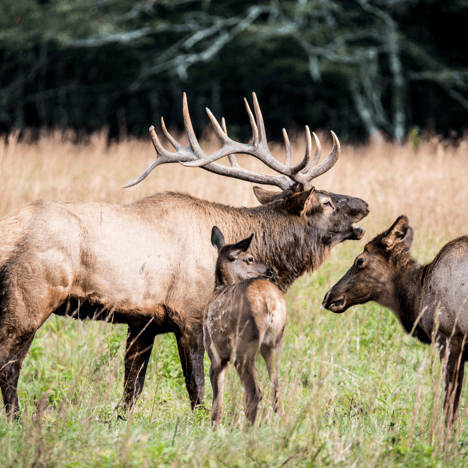Eagle County spring trail closures in effect
May is here and somehow it is still mud season! We’ve been waiting for our favorite trails to melt out all spring, but why are so many trails still closed? Although spring can be a great time to get outside, it is also a critical time for many wildlife species and their homes. You may have seen protective measures such as trail closure signs around this time of year, or you may have heard the phrase, “If you make tracks, turn back”. There are many ways we can help protect our local trails and the wildlife who use them during this season.
Trail closures help protect soil and plant growth
Why should we turn back if we make tracks? Soil needs to hold moisture in order to support plants, but sometimes snowmelt can oversaturate the soil and create mud. When mud is packed down, like from hikers using a trail, it compacts the soil by reducing the space between soil particles. Once soil is compacted, it is very difficult for it to retain water or nutrients, making erosion more likely to occur. This is what in part leads to dangerous mudslides and rampant erosion issues that can destroy trails, forests and even roads.
Furthermore, as trails are degraded, this harms the surrounding plants, who are just starting to come back to life after a long winter. Spring time is critical for plants because air and soil temperatures are starting to rise, giving plants the opportunity to grow. Plants are very vulnerable during this season and being trampled as people step off-trail to avoid mud puddles makes it even more difficult for them to survive. As the soil becomes more compacted, plants further struggle to maintain the soil their roots typically hold onto. Loose soil then creates excess dust that can eventually be windblown onto snow during the winter and accelerate snowmelt. Shorter winter seasons impact our ski slopes, forests and water supply. Protecting our trails during spring, protects our plants and soil, which also protects our slopes during winter.
Trail closures help protect wildlife
In addition to avoiding swampy conditions and supporting plant growth, spring trail closures can help protect wildlife. Many species, such as elk and deer, are migrating throughout the winter and spring. Trail closures help keep important migration corridors available and safe for animals to use. Spring is also calving season for many animals and mothers are busy nursing and protecting their offspring. Winter is an extremely challenging time for wildlife, so they do not have a lot of stored energy available during the spring. Human presence alone can cause elk and deer a lot of stress, which is exhausting and sometimes causes mothers to separate from and abandon their calves. Research has shown that elk behavior is impacted by human disturbance even more than natural predators or other environmental factors. What we do during the spring can have a huge impact on our wildlife populations throughout the rest of the year.
We can protect our local wildlife by staying out of closed areas and giving wildlife the time and space they need to survive and take care of their babies. We can protect our trails by respecting trail closures. Check with the U.S. Forest Service or Vail Valley Mountain Trails Alliance (VVMTA) to see updated trail closure maps. We can also avoid muddy trails. Even if a trail is open, if most of the trail is muddy enough to show deep tracks as you go, then it’s time to turn back. Try hiking in the morning when trails are still frozen or find south facing slopes that are more likely to be sunny and dry.
Final thoughts
If there is an open and dry trail with only a few muddy spots, get muddy! Wear gaiters and sturdy boots that can handle getting dirty and make sure to stay on trail. Going off trail to avoid mud puddles can create social trails that damage not only the trail itself, but also the plants trying to grow nearby. Summer is just around the corner, stay patient, your favorite trail is not going anywhere and during this transitional time we can do a lot of good by doing less and respecting trail closures.

Want to learn more about Eagle County trail closures?
Holy Cross Ranger District of the White River National Forest - Spring Trail Closures
Vail Valley Mountain Trails Alliance Trail Closures Information
Carli Escamilla (pronouns she/her/hers) is a Naturalist at Walking Mountains Science Center. She spends her free time in the spring being humbled by the challenges of bird identification while patiently waiting for trails to reopen.










